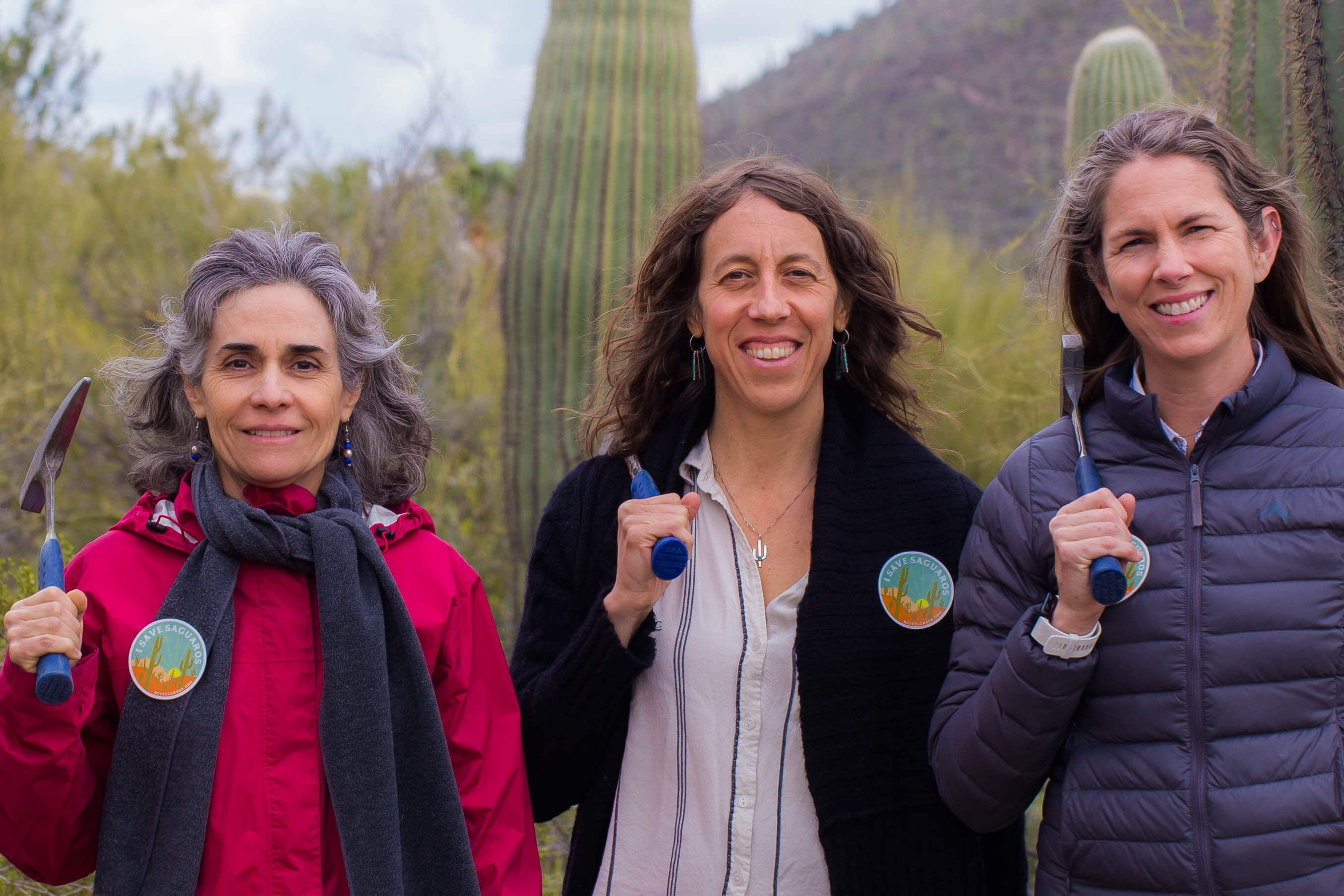
By Catherine Bartlett.
Imagine Southern Arizona inundated with dry, thigh-high grass spread before you for miles, devoid of diversity and missing the icons and stanchions of the desert: saguaros. This monoculture is what the Sonoran Desert will look like without serious intervention in the fight against the invasive species buffelgrass, or BG for short. Buffelgrass is a nonnative grass that pushes out other plants and the animals that rely on them and fuels dangerous wildfires that burn between 1400-1600°F. For comparison, aluminum melts at 1200°F. The bottom line? Saguaros and buffelgrass cannot coexist.
At the Arizona-Sonora Desert Museum, three women are working tirelessly to tackle this problem: Kim Franklin, conservation research scientist; Julia Rowe, invasive species program coordinator; and Sonya Norman, public programs coordinator. With nearly 40 years logged on buffelgrass between them, they’ve garnered the support and respect of the community – not to mention a handful of blisters along the way.
What compels you to work on buffelgrass?
Sonya: I love the desert and seeing it remain in the state it’s supposed to be in. It’s a tangible problem with momentum and people working together in the same direction. It’s so satisfying to see a cleared landscape after a pull.
Julia: BG is a game-changer. The entire ecosystem will change to grasslands without our help. It’s a massive problem, and I can help.
Kim: I get to work to save the Sonoran Desert. Not only is it super interesting working with other organizations, it’s a problem we can fix!
To what would you compare the buffelgrass problem?
Julia, Sonya, and Kim in unison: Cancer.
Sonya: It multiplies quickly, spreads, and invades everything in its path.
Is there hope for the future?
Sonya: If we’re proactive, yes. And for a case study, look at the Tucson Mountains. That’s success.
Kim: YES! Of course. We’re in great shape because we have an engaged community. Look at the number of volunteer hours logged in 2018. Between Sonoran Desert Weedwackers, Saguaro National Park Weedwackers, Catalina State Park Buffel Slayers and other organizations, there are more than 7,000 hours that people have donated to digging up the grass. That’s just incredible. On top of that, we have a plan that leaders want to see succeed, so there’s support from many angles.
What can individuals do to help?
Sonya: Go to buffelgrass.org to learn more, then sign up for a pull!
Julia: Yeah, a pull is where you get to see it, get to know it, and you get to interact with different groups and people while you work together. It’s actually really fun.
Kim: Communicate the problem with friends and neighbors. If you do a pull, get social and share it! #saveoursaguaros
Lastly, what’s the best thing you’ve come across while pulling buffelgrass?
Sonya: Baby rattlesnakes—they are just SO cute!
Julia: Gila monsters. And one morning there was a herd of bighorn sheep watching us work.
Kim: Baby saguaros, and then clearing the buffelgrass around them so we can give them a chance.
Catherine Bartlett is an education specialist at the Arizona-Sonora Desert Museum, a nonprofit focused on conservation, education, and inspiring others to live in harmony with the natural world.
Photo Credit: Liz Kemp





